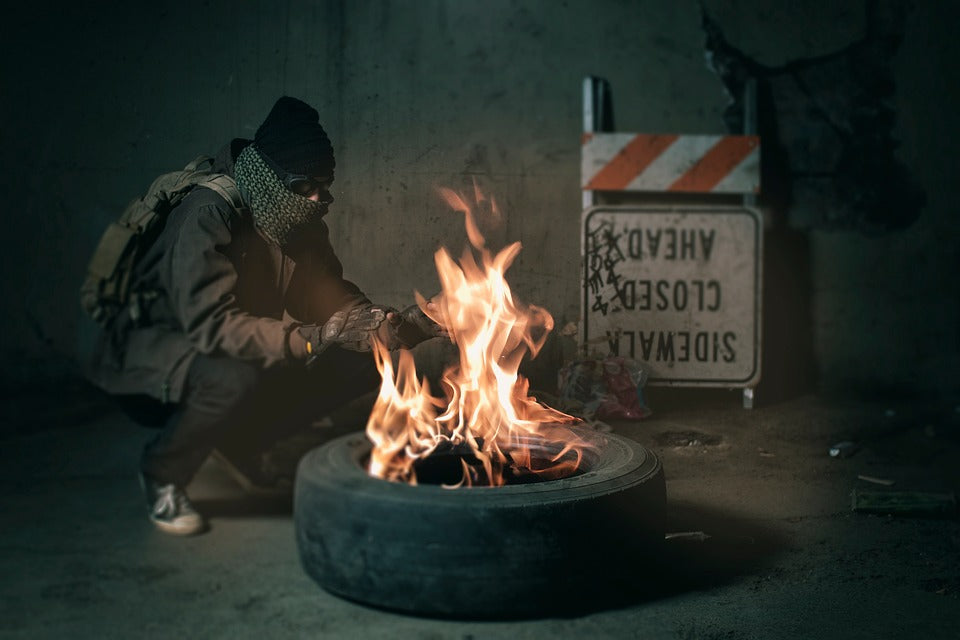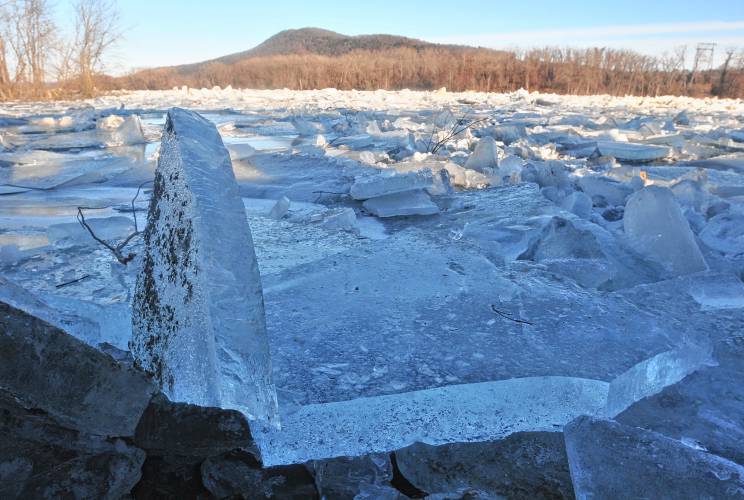
40 Ways to Stay Warm This Winter
- Wrap up warm – Layering your clothes is best and is generally more effective than using one big layer. Have the thinnest, fluffiest layers closest to the skin. Materials such as natural wool or fleece are best at retaining heat, whilst allowing air to circulate around your body (which is important for moisture management). Although perhaps counter intuitive, having denser thicker layers as the outermost layer is actually best in terms of trapping heat.
- Fuel your body – Your body has its own thermoregulatory system (your body tries to maintain a constant temperature of c. 36.5oC). Drinking hot drinks, eating soups, stews and hot, cooked food in general, will all help raise core temperature. During cold spells, be sure to eat at least one hot meal per day. Importantly, eating cold foods and drinks can have a cooling effect on the body so it is best to avoid these if you are having issues with keeping warm.
- Remain active. This is an effective and economical way of keeping warm. Try to keep active for at least 5 minutes out of every hour. Even relatively light physical activity can help raise body temperature. In extreme survival situations (for example camping in Winter), experts recommend doing fairly rigorous physical activity before going to sleep. Try to stop before the point of beginning to sweat, as sweat (and moisture in general) has a cooling effect on the body. The warmth you generate should allow you to sleep for a few hours before you get too cold again. Don’t worry, you will not die in your sleep if you get too cold – your body will wake you with extreme shivering before this can happen ((unless you are already in a severely weakened state (i.e. borderline hypothermic/ill/injured)).
- Exclude draughts. Draughts can carry away all the heat you generate. Use draught excluders around windows, underneath doors, around hatches and over gaps in floor boards. Surprisingly, depending on how your house has been built, electric sockets can actually let in a lot of cold air. It is possible to buy foam covers which can easily be installed, to eradicate this problem.
- Be sociable. The human body radiates a lot of heat. A room full of people will invariably be warmer than a room bereft of people. Get your friends or family to come around or go to theirs for a visit. It is also psychologically important to maintain good spirits and being sociable has been proven to do this.
- Maximise heating efficiency. Invest in some boiler TLC/maintenance. Clear any debris out of ventilation vents and flues. This can a dramatic effect on the efficiency of the boiler. If your boiler is not adequately aerated, the Natural Gas is being burned inefficiently so more is used to produce the same amount of energy, meaning higher bills for you.
- Seal off chimneys. If the chimney no longer serves a purpose, it is essentially a hole in your house which lets out heat. These can be sealed of professionally or a cheaper solution is to use a “chimney balloon” which is a non-permanent solution and can simply be deflated when no longer needed. Be sure to remove it before lighting a fire!
- Harness the sun. Open the curtains and blinds in sun facing rooms and spaces. This can have significant effects on air temperature, even in the middle of Winter. Efficient solar panels, can heat water to bathing temperature, even in Winter.
- Hang Blankets. Hanging blankets can be used to block off “dead space” areas such as landings and hallways. This reduces the volume of space your boiler/heaters have to heat and minimises the escape of hot air through the movement of air.
- Radiator Reflectors – These generally take the form of reflective aluminium sheeting stuck to the walls behind radiators. This increases radiator efficiency by deflecting heat into the middle of the room rather than into the wall the radiator is next to/attached to.
- Rice Socks. Essentially a form of hot water bottle. Half fill a sock with uncooked, dried rice, then tie off the sock. Place in a microwave on full power for a minute or two (depending on the size of the bag). This should act as a hot water bottle and can be reheated as needed. Be careful not to burn yourself! Make sure the sock is tied of properly to prevent roasting hot rice kernels from coming into contact with your skin.
- Don’t consume alcohol – Alcohol may initially make you “feel” warmer as it opens up the capillaries but in actual fact, your body will lose heat faster when you are drunk/tipsy. Also, in a survival situation, you want your faculties about you so you can make the best decisions possible, in the circumstances.
- Turn on your ceiling fan. Hot air rises, so the warmest part of a room is usually just underneath the ceiling. Switching your ceiling fan on low, will help redistribute the hot air within a room. This should help minimise cold spots, making the temperature in the room regular. This method may be useful if you have high ceilings.
- Use a programmable thermostat. This can maximise the efficiency of your boiler and heating system. For example, you could have it switched on largely during low consumption times of the day (typically meaning cheaper electricity and gas during these periods). Also, having the timer on rather than having it on constant obviously results in using less fuel. It is generally coldest before dawn so having your heating switch on at 4/5am for a couple of hours until perhaps 8/9am and then back on at 4/5pm until perhaps 10pm. This way you are not heating an empty building. If you are going to be in, then have your timer come on around midday also, for a couple of hours. It is more efficient to keep the heating on for lots of short periods throughout the day rather than for one large period of time.
- Dress you windows for winter! Layer up window covering to minimise heat escape. Use net curtains, window shutters, heavy drapes/curtains and indoor window insulation kits. An economical tip is to simply double up your curtains with a shower curtain rather than buying winter drapes. Stop that warm air escaping. Double glazing is also very effective.
- Bake and cook. Your stove will put out a lot of heat during cooking and baking. This will help warm the rest of your house. The stove will also act as a heat sink. Leave it slightly open after baking to allow all the heat to radiate into your home.
- Surprisingly, heat is released by microbial action during the composting process. In fact, in the 17 and 18th centuries, people used the heat produced by composting manure, to heat hot houses in order to grow pineapples, even in the British climate.
- Hand warmers in your pockets. These can act as personal central heating units. Even one inside a thick jacket can provide a lovely warm cushion of air. Be sure not to rest it directly against the skin as it can cause minor burn injuries!
- Fool your thermostat – Some “locked” thermostats can be fooled into working by placing ice cubes next to them, in very close proximity. When the thermostat detects the drop in temperature, it will active the heating.
- Move furniture to maximise radiator efficiency. If you have a sofa in front a radiator, it will be absorbing and blocking the spread of heat. This basically takes away from efficiency means higher bills for you and less warmth for your house.
- How to make a hand-warmer at home. Please see above for the “rice sock” technique. Another alternative is to make a reusable “chemical” hand warmer. This can be done using several easily available “home store” ingredients. Please follow this link for full instructions CLICK ME
- Use pipe lagging. As your central heating system pumps water through pipes, heat is lost to the air before reaching your radiator. You can maximise the amount of hot water reaching your radiators by cladding any exposed piping in pipe lagging. This is basically a foam tube that goes around copper piping, to keep heat in. This results in less work for your boiler.
- Bleed your radiators. Having huge air spaces in your radiator means hot water cannot properly and efficiently circulate. Having huge amounts of air inside a heating system may result in complete system failure or greatly reduced efficiency.
- Floor and wall coverings. Lots of heat can be lost through gaps in flooring and walls. Use additional carpets and wall covering during the coldest months. In many countries, animal skins and furs are used in this capacity.
- Check up on elderly relatives. Particularly if you have not seen or heard from them in a day or two. They may need some help or a hot bowl of soup and a hug!
- Look after your pets. Do not leave them outside for too long. Animals, even those with relatively thick coats, can freeze to death, just like any other mammal. Make sure they are well fed and have a warm, dry and draught free sleeping area.
- Be aware of the possibility of flooding and other severe weather conditions which may exacerbate cold problems. Also have a backup plan for extreme situations such as power cuts or supply line problems.
- Bath oil or Vaseline application. Just as with cross channel swimmers, a layer of animal or other fat, smeared directly on the skin acts as an insulator. It may not be the most pleasant sensation but it will keep you warmer (and keep your skin supple).
- Sleep next to a loved one (including the feline or canine kind). Sharing body heat is an efficient, cost effective and safe way of keeping warm (for example, sharing body heat is the best way to warm someone up who is suffering from hypothermia).
- Warm your bed with a hair dryer. A thirty second blast on hot will take away the cold feeling against the skin. So your body doesn’t have to do the work. It is best to avoid shivering.
- Using fleece or goose down. Both of these materials are referred to as “having loft” that is, air spaces within the fibers of the material which are very effective at trapping heat, in the form of hot air. Ideally, these layers should be close to the skin. We would suggest a thin t shirt made from wool or bamboo with a wool or goose down top covering it. Toasty warm!
- Electric blankets. There are various opinion/concerns about the health aspects of using electric blankets. One thing that cannot be debated, is they make your bed snuggly warm! Switch off before sleep.
- Using candles and lamps. Bear in mind, these always present a fire hazard so please exercise maximum caution when using either. A few burning candles can significantly increase the temperature within a room. The same goes for paraffin lamps and alcohol stoves (keep the room ventilated). An interesting life hack is called the ceramic pot heater. Please follow this link for a “how to” demonstrations.
- Wear thick, warm slippers. Any exposed skin will lose heat rapidly. Keep everything covered up including your feet. Particularly if you have stone or slate flooring.
- Keep the bathwater in the bath until it cools. This will act as a radiator and will give off heat into the surrounding atmosphere. A good little trick to use.
- Keep one room warm. If you are at home all day, it may make sense to only heat one room – the one you will be spending most of your time in.
- Controlling the level of air humidity in your home can be an important part of regulating your home’s air temperature. As any survival expert will tell you, wet skin loses heat 10 times faster than dry skin. Electronic de humidifiers can be purchased at small cost from many hardware and homeware shop.
- Stay hydrated. Although perhaps counter intuitive, cold weather can be very dehydrating as can centrally heated environments. Drink plenty of fluids including hot beverages.
- Spicy foods. As with consuming alcohol, eating spicy foods will open your capillaries. If you are in a warm environment, this will help you warm up faster (equally, it will cool you faster if you are in a cold environment).
- Ye “olde tin can method”. This is an old school boy trick. Get a used tin can, puncture the bottom multiple times including a hole right in the middle of the base. Tie a one metre length of string/rope through the central hole in the bottom of the base and secure with a knot. Now swing the can on the rope rapidly around in a circle for a couple of minutes. As the air is forced through the small holes in the bottom of the tin, it produces friction and subsequently heat. Now you can warm your hands or other body parts on the hot tin. Swinging the can will also increase your body temperature as it is a form of physical exertion.
*** Image courtesy of Pixabay

